If you don’t know where to aim when shooting turkeys, you better be able to track a wounded turkey. Even a close-range hit with a shotgun will often fail to penetrate a turkey’s feathers or bones with enough force to damage vital organs.
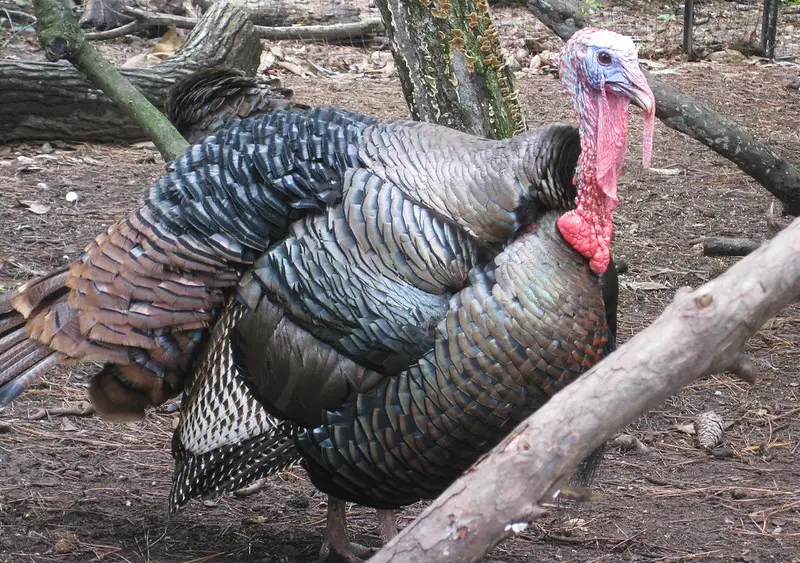
Shooting turkeys requires knowing the effective range of your weapon, knowing the distance to your target, and waiting until the turkey is in a perfect position to take your shot. Aim at the head and neck when using a shotgun. Aim for where the butt of the wing connects to the body when using a bow.
Shooting turkeys with a shotgun or bow.
Shooting turkeys is nothing more than your final reward for all that preseason scouting and study.
You searched for and found a turkey roost. You learned which turkey calls to use and when to use them. You may have built a turkey food plot or even hunted turkeys in the rain. You’ve picked the best time of day to go turkey hunting, and you know how to tell a Jake from a Tom.
Taking that gobbler now requires nothing less than perfect turkey shot placement.
The three essential elements of how to shoot a turkey.
The three essential elements of how to shoot a turkey are knowing the range, being properly prepared to shoot, and carefully aiming at the right spot. Both factors will depend on your weapon choice, shotgun or bow.
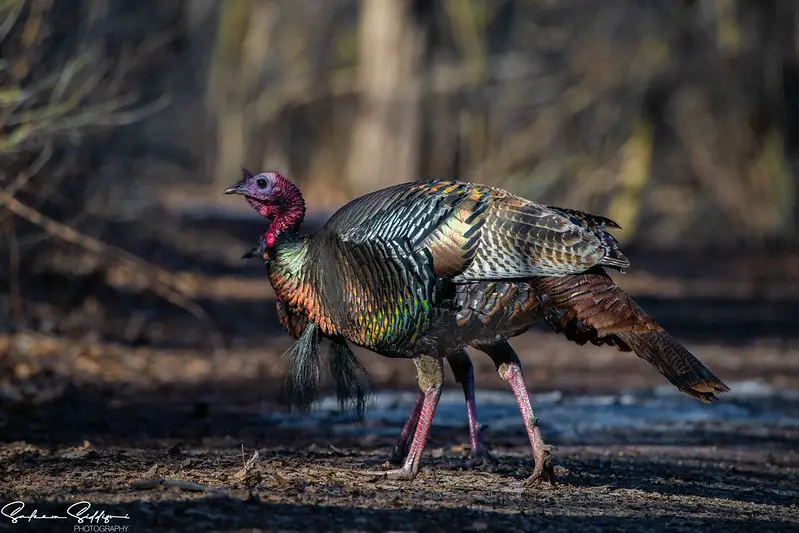
You have to know the range to your target when shooting turkeys.
One of the best investment for turkey hunting is a range finder. Once you have settled into your turkey hunting stand, take a few reading on some prominent features in the direction your expect to gobble to approach.
Measure the distances to a few trees and bushes the turkey is likely to pass by when it comes to your calls. Now, locate and range the distances to objects within the maximum effective range of your weapon. These will be the locations where you can effectively take a dead right-there (DRT) shot.
How far can you shoot a turkey to produce a DRT shot? The best distance to shoot from will depend entirely upon your shooting abilities. Sadly, I’m not a very good shot. So, ethically, I must wait until a turkey is within 25 yards with my shotgun and 15-20 yards with my bow.
Hopefully, you are a better shooter than I am. An excellent marksman can flop a tom at 50 yards with the right shotgun shell. Some archers can take a turkey at over 30 yards with a bow. To be safe and avoid wounding and losing your bird, remember the maxim, ”A man has got to know his limitations.”
Remember also to take all these range readings before you start calling. If you don’t, especially when you are a new turkey hunter, you guess wrong in all the excitement. With practice, you will learn how to tell how far away a turkey is and when it is within range.
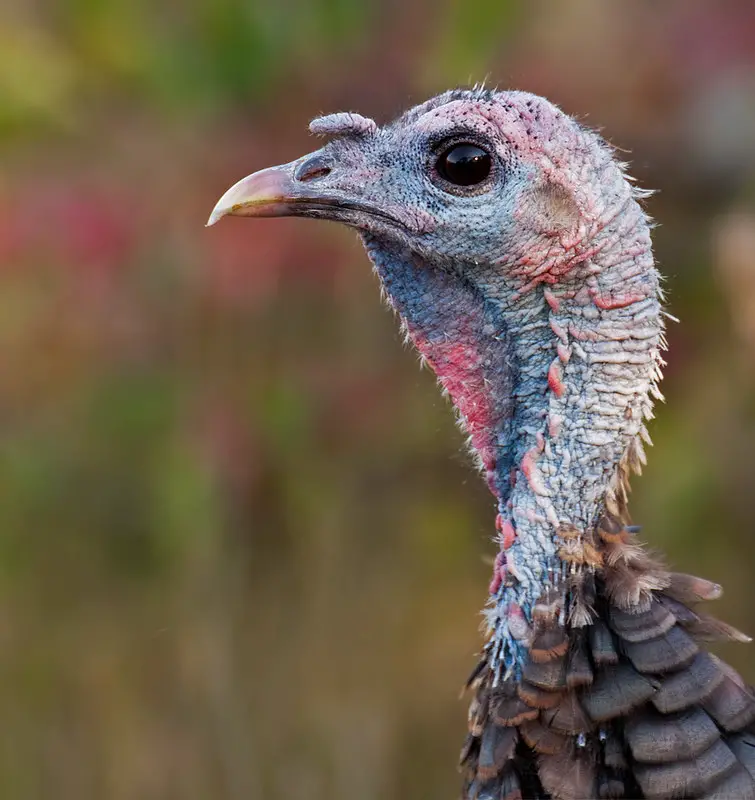
Be prepared to take your shot when hunting turkeys.
The last thing you want to do before you shoot a turkey is to make a significant movement with your body. At the distance most turkeys hunters take their shots, this change in position is a huge, waving danger flag to a turkey. My uncle used to say, ”hands are flags,” but with turkeys, they are flares.
A turkey has about 270 degrees of vision, and its constantly moving head can spot any movement 360 degrees around itself. A turkey can see in color, has the same low-light vision as you, and was born to detect and avoid sudden movement on the ground.
So, move an arm too fast or majorly change your body position, and that turkey is gone.
Have your weapon properly placed to take a shot from the anticipated approach locations to keep from being busted.
When turkey hunting with a shotgun, your entire body must be comfortably situated to eliminate the need to make extensive changes. It would be best if you didn’t have to use muscle force to hold the aim—your sites should instead naturally rest in the proper direction. This means the stock is firmly against your shoulder, and your muzzle is aimed toward the suspected approach lane.
Shooting sticks can be a blessing here. They take the weight of your weapon and significantly reduce your need to shift around to hold your shotgun in place. I use a Bog Deathgrip now, but I started out with the shotgun resting on my knee when hunting turkeys with my back to a tree.
Hunting turkeys with a bow is harder by orders of magnitude. It would be best if you began by placing your body in the best position to limit movement and in the most likely direction from which the turkey will appear.
Other than that, and if you guess wrong, you’ll need one more trick to cover any changes in the position you have to make to score a hit when shooting turkeys.
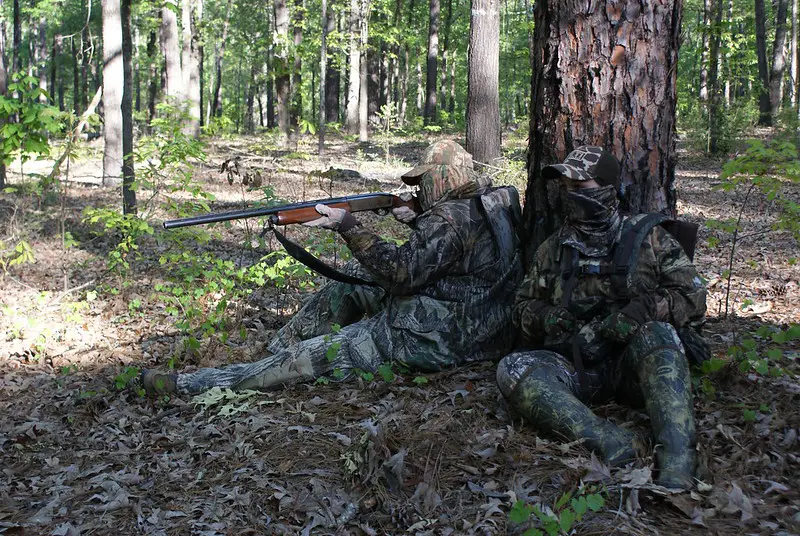
How to change position when shooting a turkey.
Avoiding the eyes and ears of turkey is the preeminent challenge turkey hunter face. If you are not ideally placed to take your shot, you need to somehow even the odds.
So, how can you move quickly, quietly, and invisibly when changing body position while hunting turkeys? Knowing the other possible locations, a turkey may approach and wait until you can hide and silence your movements.
If the turkey remains out in the open and there is no chance of it turning its back on you or walking behind an obstacle, your only choice is to move as silently and slowly as possible. Speed here can ruin your chances.
Your best chance to change position to shoot a turkey, however, will be when the gobbler is distracted or turns his back to you.
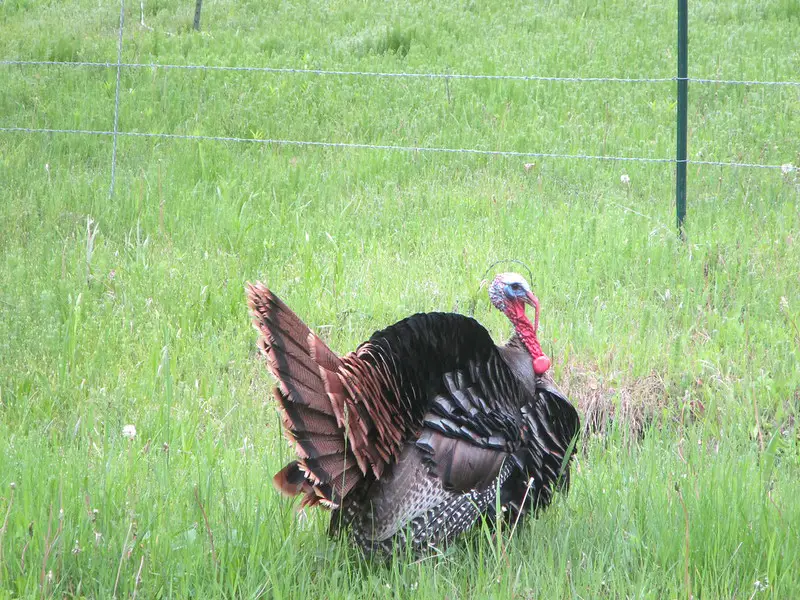
Wait until the turkey walks behind a clump of brushes or a tree, and its vision is blocked before changing position. Or if the turkey responds to your calls by strutting and fanning its tail. Then move only when its view to the rear is obscured by its tail fan.
However, patience is needed as you don’t want to shoot a turkey in the backside. Just use this opportunity to make all the necessary body changes and then hold on for a moment. Let him stop his strut and turn broadside to you again before shooting.
Where to aim when shooting turkeys with a shotgun.
The best place to aim when using shotgun when shooting turkeys is at the turkey’s waddles. The turkey’s waddles the bumpy and wrinkled red skin below its head. Aiming at the head often produces a miss over the top of the target.
And the head is a very tiny target! Instead, place your sites on the waddles and make sure you can see the head above your sites.
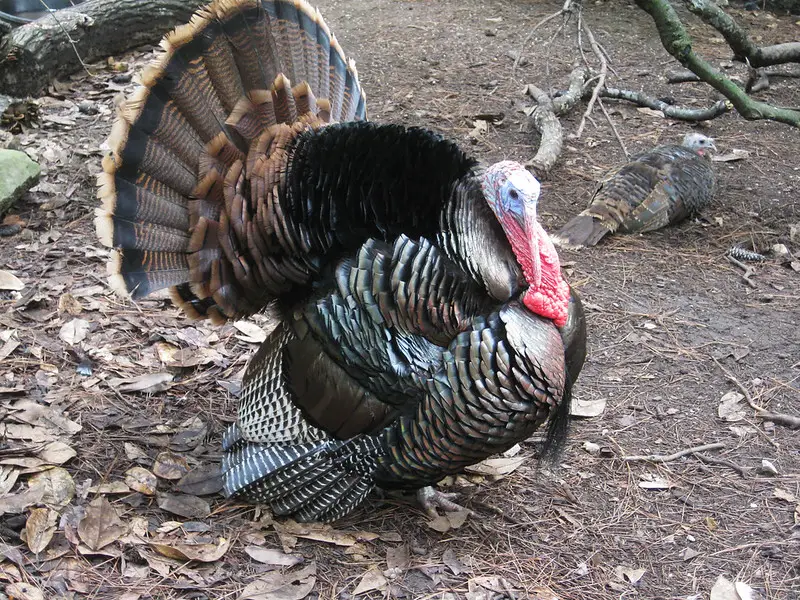
Remember to place your shot where it will do minor damage to the meat. Head and neck shots instantly flop a gobbler, but so do center-mass rifle shots. One leaves a large, edible portion of meat—the other does not.
Where to aim at turkey when hunting with a bow.
Turkey hunting with a bow, as I have said, is much more difficult. The best place to aim when shooting turkeys with a bow is where the butt of the wing connects to the body. Even if not entirely accurate, a hit here will at least prevent the gobbler from taking off 100 yards and escaping into the woods.
Aiming at the head is always a fool’s game, as with any animal; indeed, with a prey animal, the head is constantly moving. Only an expert archer can make such a shot, and fortunately, most new turkey hunters know they can’t hit it and won’t even try it.
Aiming for where the butt of the wing connects to the body on a broadside gobbler often produces a DRT by destroying the lungs. But most other shots are best taken with the turkey engaged in some act of displaying himself for the hen you made yourself out to be.
With the bird strutting, aim for the top of the beard if it is facing forward. If the gobbler is reacting to an alarm putt and facing you, try to place your arrow in the upper half of his breast. If the turkey is turned away from you, place your shot right in the bottom of the fan.
Some final tips on how to shoot a turkey
Like coyote hunting, getting the turkey to stop and present the best target is crucial. Many experts recommend using an alarm putt call before shooting a turkey. A gobbler will instantly stretch out their neck upon hearing this and give you your best target to shoot a turkey.
Using a turkey blind is a great way to cover your body movements. The best advice is to set it before the season and early enough to habituate the turkeys to its presence. If you’ve found an oak tree, setting up and maintaining a blind near it will let you use it for both the fall and spring turkey hunting seasons and bow and rifle deer hunting seasons.
And the last turkey hunting tip is to be safe!


